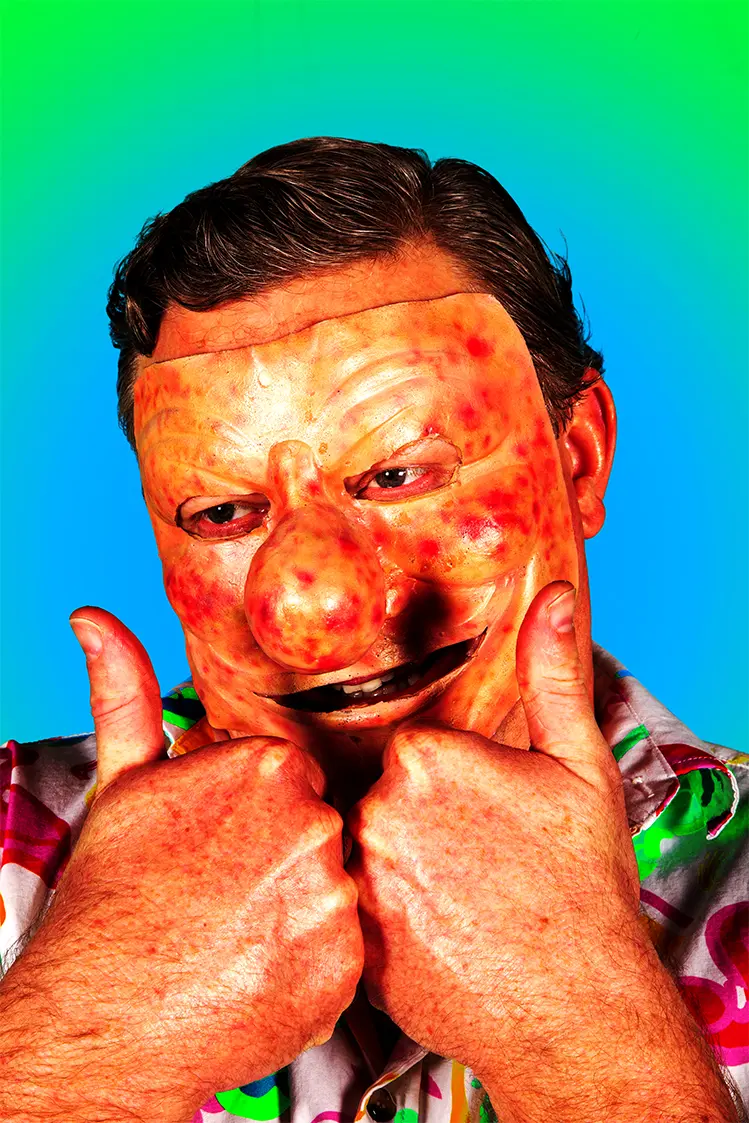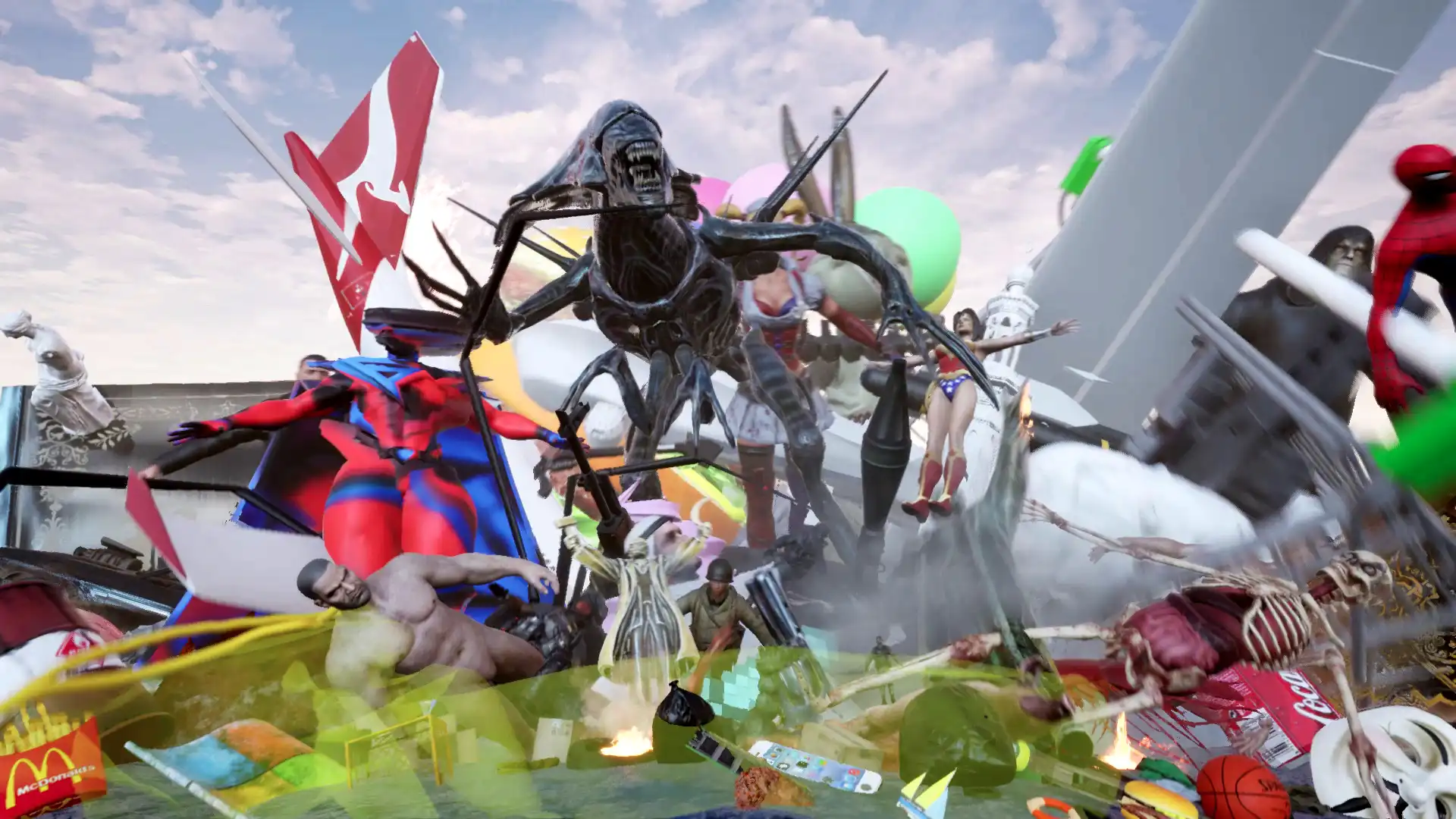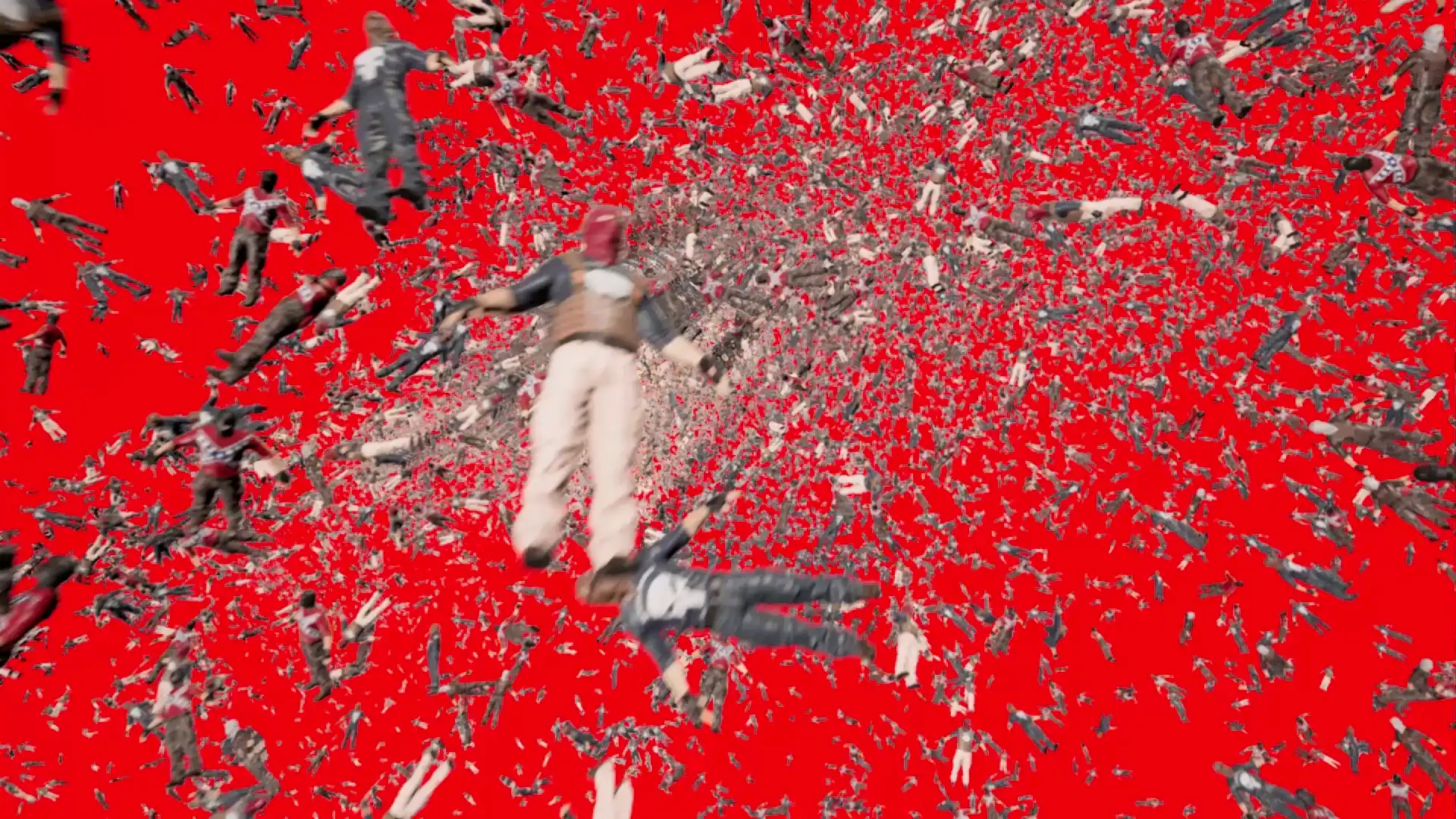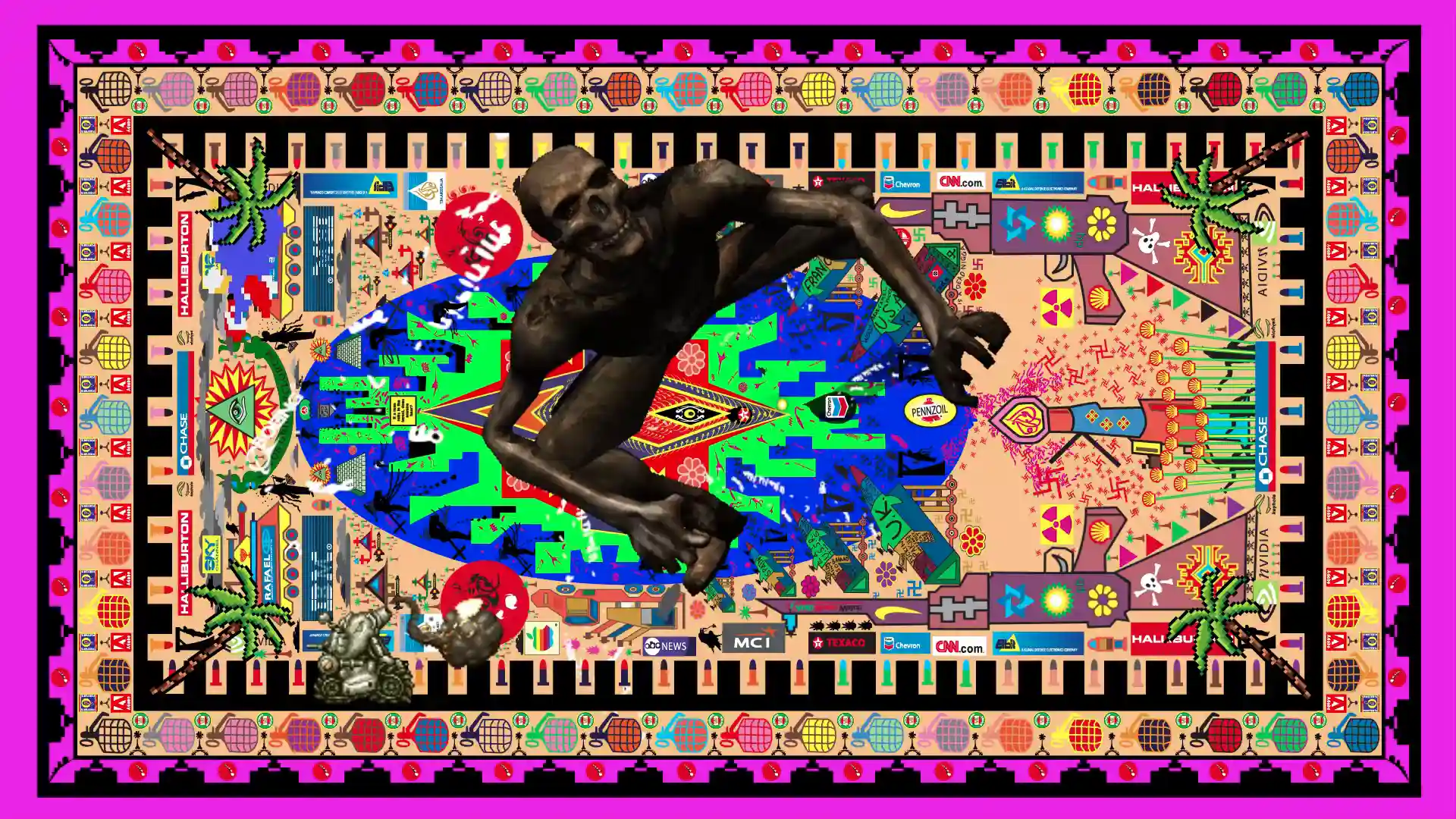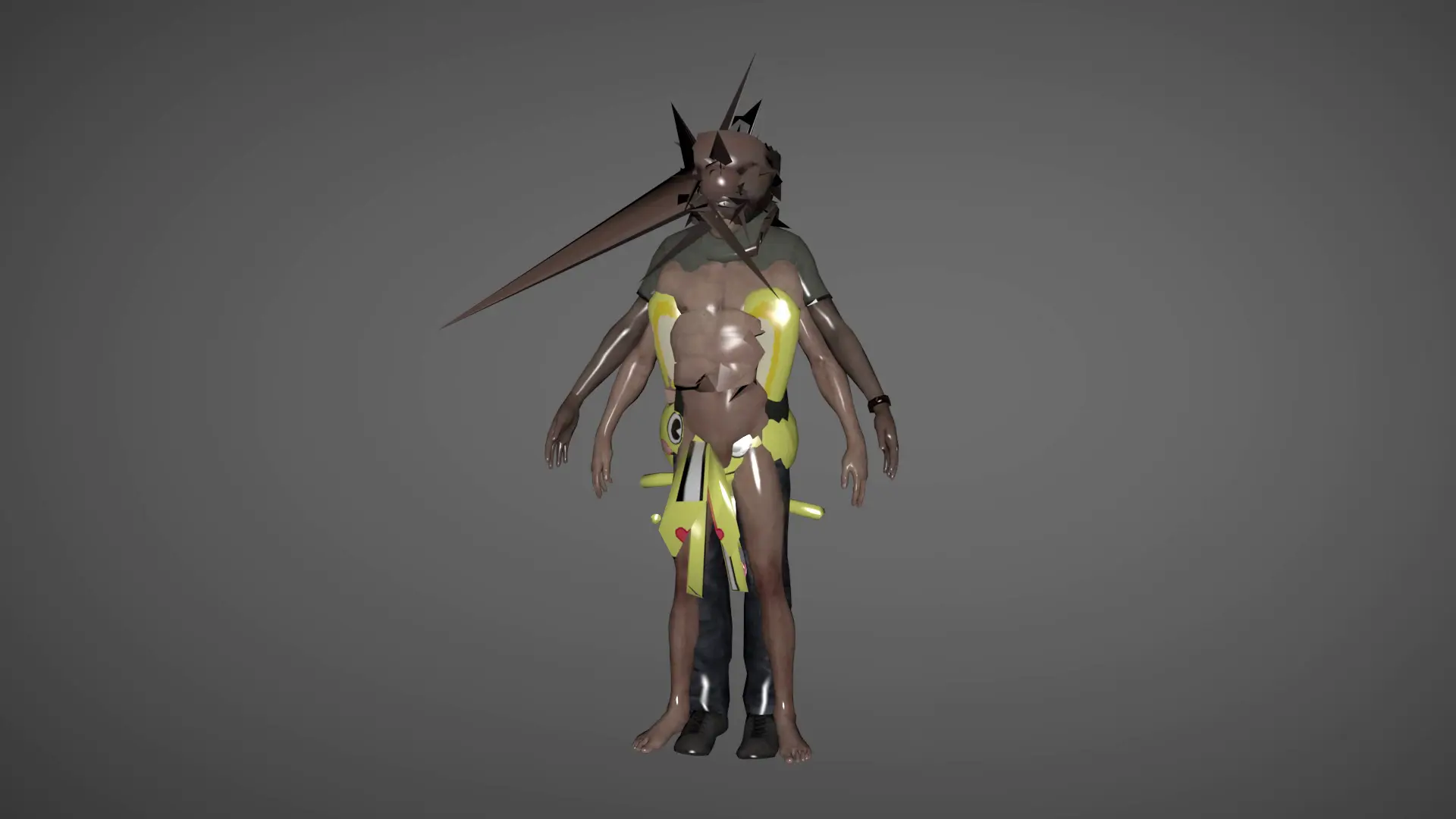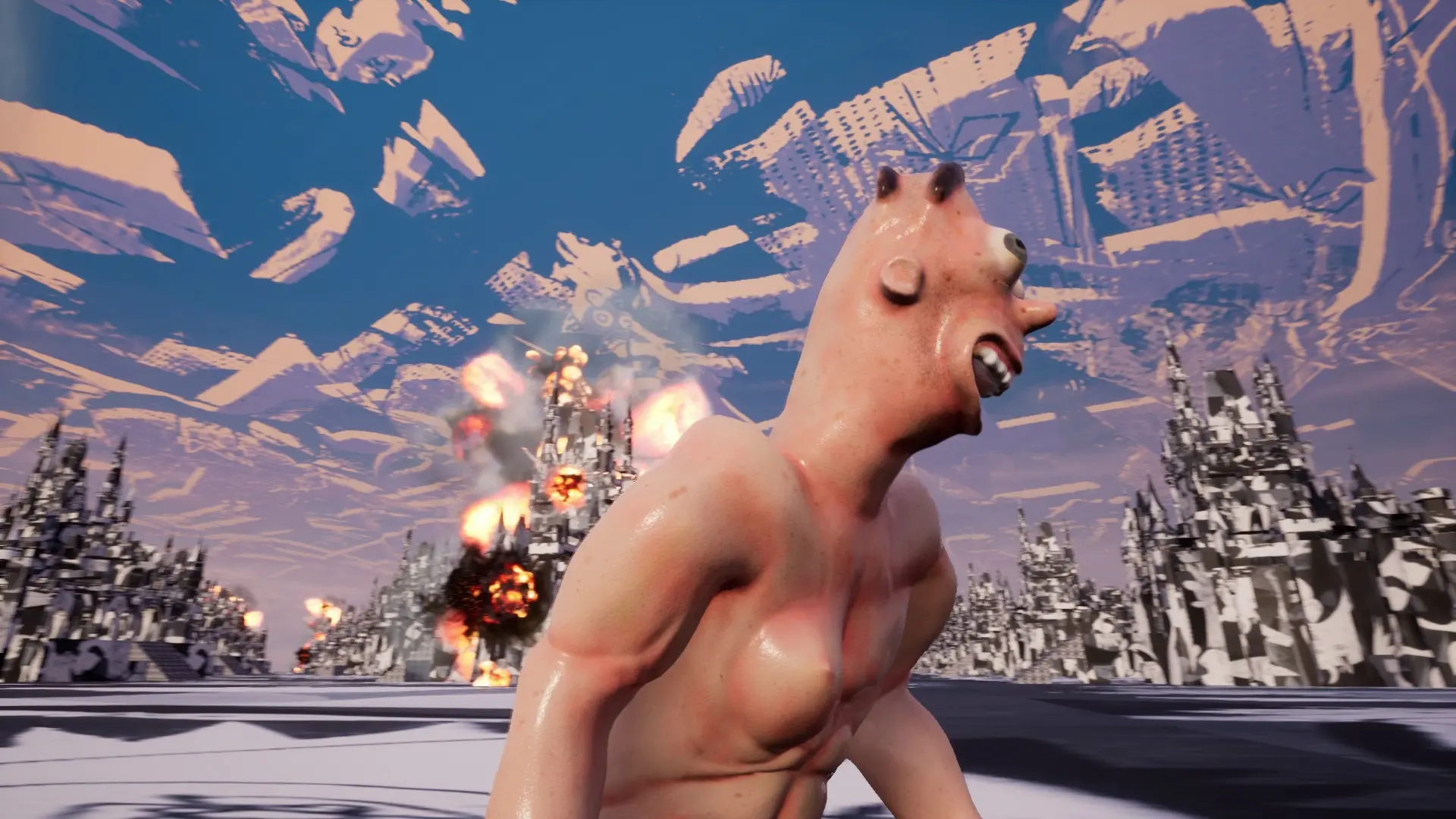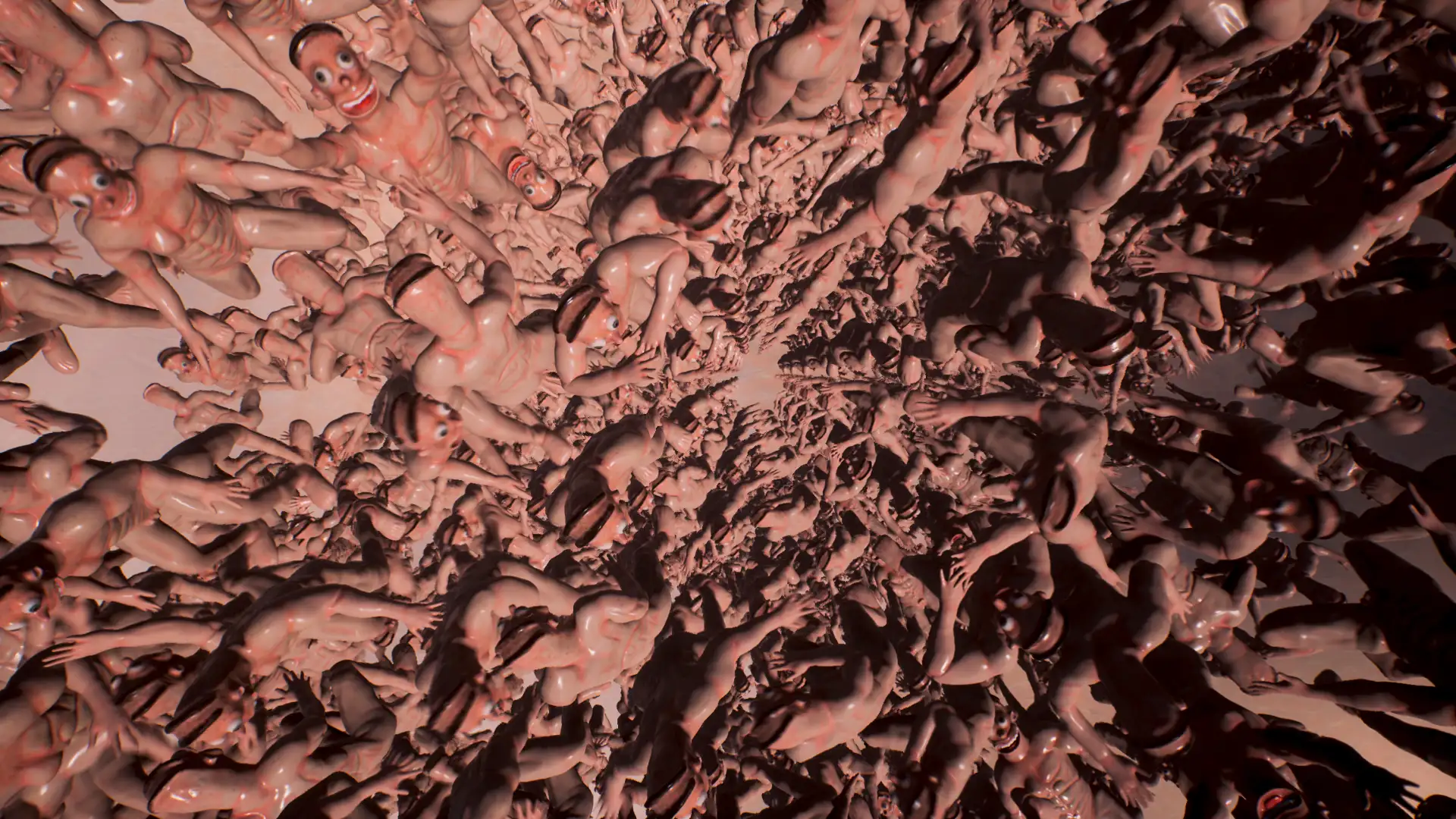Works like Bushstalkers were purposively redesigned to confound the expectations of the user so that they might reconsider their own role in the narrative of the game. Howlett reconfigured and thereby inverted the essential operations of the first-person shooter video game Unreal Tournament 3 with the effect of folding the real world back into the virtual and remapping the experience of violence and death. Indeed, the viewer can’t actually shoot the weapons because this essential function has been disabled.

from top: Bushstalkers. 2009. Machinima video still. PAL, HDTV, 1920 x 1080, 16:9; Bushstalkers, 2009. Installation detail.
Metro Arts, Brisbane. Photography Brock Yates.
This left players with nothing else to do but aimlessly wander around a nocturnal forest landscape following a set of random lights. When one did step into the light, so to speak, another type of dysfunctional process was revealed: that of the perverse misrepresentations that make up the fog of real war.
For in Bushstalkers Howlett remapped the fantasy of virtual death to include the actual voices of Iraqi veterans who related tales of revenge, false confession and the right-wing media spin that make up the competing narratives of the pro and anti-war movements in America. In modified Sims works like Michael Jackson 4 ways: Parts 1,2,3 and 4, Homesteads and more recently Metropolis Howlett makes us aware of how these simulated environments are becoming more pervasive. They are also increasingly being conflated with our ‘real’ lives for Sims-based mods are predicated on ‘a simulation whose logic is based on transparent omnivision’. (Bittanti, M. All too urban: to live or Die in SimCity p35. In Atkins and Krzywinska Ed. Videogame, Player, Text Manchester, Manchester University Press. 2007)

clockwise from top: Michael Jackson 4 Ways: Part 1-4, Machinima video still (Three Jacksons watching TV), 2009/ 10. Single channel. PAL. HDTV 1920 x 1080, 16:9,30 minutes; Michael Jackson 4 Ways: Part 1-4, Machinima video still (Seven Jacksons locked in a room). 2009/10. Single channel, PAL. HDTV 1920 x 1080, 16:9, 30 minutes; Michael Jackson 4 Ways: Part 1-4, Machinima video still (Seven Jacksons locked in a room), 2009/ 10. Single channel. PAL, HDTV 1920 x 1080, 16:9, 30 minutes; Michael Jackson 4 Ways: Part 1-4, Machinima video still (Seven Jacksons locked in 11 room), 2009/10. Single channel. PAL. HDTV 1920 x 1080, 16:9,30 minutes.
In the Homesteads series we are witness to the internment and eventual disintegration of Sims family units while on audio tracks Dr Phil and Oprah roll out their familiar shtick of confession, humiliation and redemption in television land. In Homestead I and II the Rudd family – patriarch and (now ex) Prime Minister Kevin, wife Therese and their three children – are all trapped in their very own ‘vector to pure transparency’, which is part green house, labyrinth and isolation chamber. If ever there was an ideal avatar for being a Sim it would have to be Ruddbot aka Kevin Rudd. The irony is almost too much. But unfortunately, the reality is more troubling than that, because Rudd is essentially a religiously devout conservative populist, who strategically manipulates the language of faith to control
the way in which economic and cultural scenarios become morally obfuscated. He has often stated that he wants to make people’s needs transparent but ends up rendering these desires opaque through the heady mixture of narcissism and ideological doublespeak common to political life. Howlett as one Rudd’s constituents, ensured that their carefully crafted and controlled images were at his mercy, and he was frankly none too happy with the politician’s game. It is then not surprising that the characters in Homestead I and II live in a glass prison for all to see and die in virtual splendour. He has often stated that he wants to make people’s needs transparent but ends up rendering these desires opaque through the heady mixture of narcissism and ideological doublespeak common to political life. Howlett as one Rudd’s constituents, ensured that their carefully crafted and controlled images were at his mercy, and he was frankly none too happy with the politician’s game. It is then not surprising that the characters in Homestead I and II live in a glass prison for all to see and die in virtual splendour.
The other major body of work in Flashbacks was called Frequencies. Here Howlett reconfigured, or hardware hacked, iPod FM Transmitters and modified their capacity to receive and transmit information. Like his video and game works, this soundwork examined the logic of technology and its relationship to the construction and dissemination of meaning. Howlett carefully extracted and rearranged fragments of “speech”, specifically vocalised expressions that include moans, screams, grunts, groans, laughter, sighs, and silent gaps between words. These were transmitted as radio waves in an array of radio receivers in the installation. This generated a series of formless fragments in a soundtrack of transitory and sensuous grains of the voice, at once referencing the textures, timbres and affects of the corporeal, while at the same time highlighting the liminal nature of their origins. The radios also began to resemble glossolalia machines that displaced and disrupted the familiar narratives of the airwaves. As in Flashbacks, the work in Frequencies established another site for reconsidering the transformative potential of media, but one that emphasised poetic rather than social or political dimensions.


